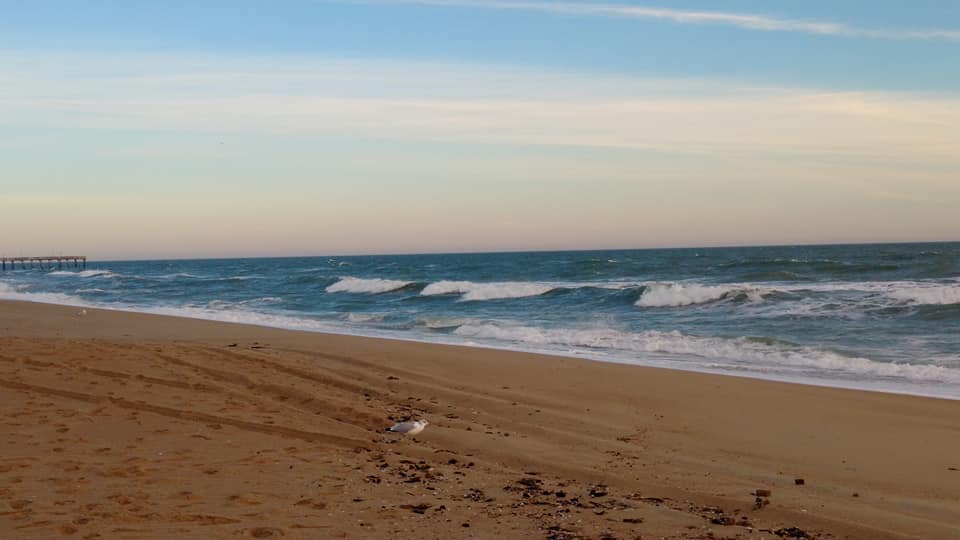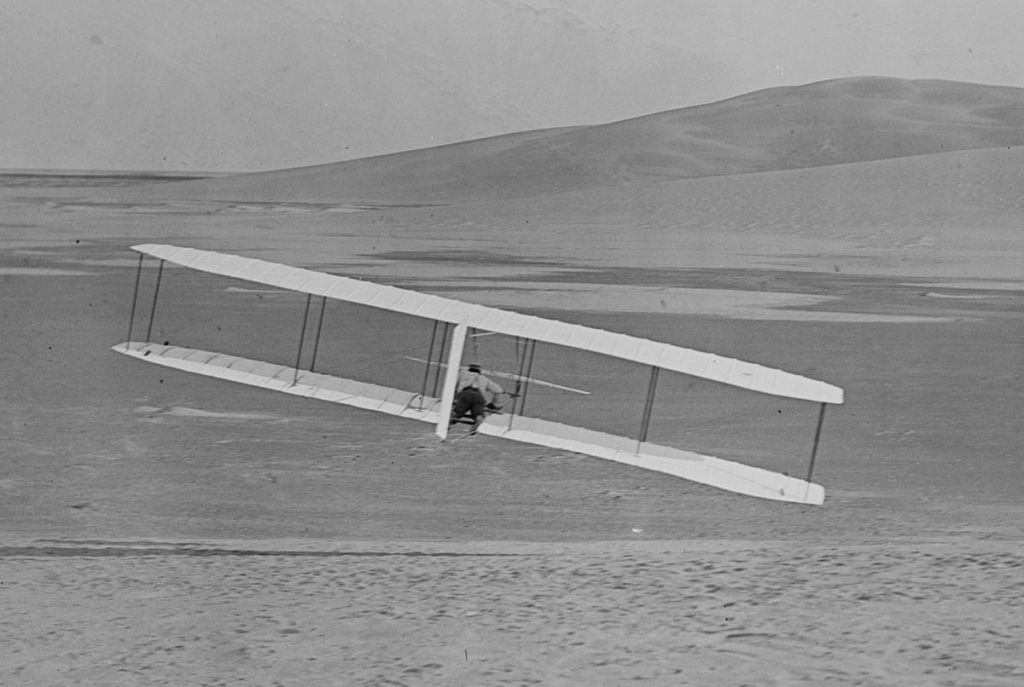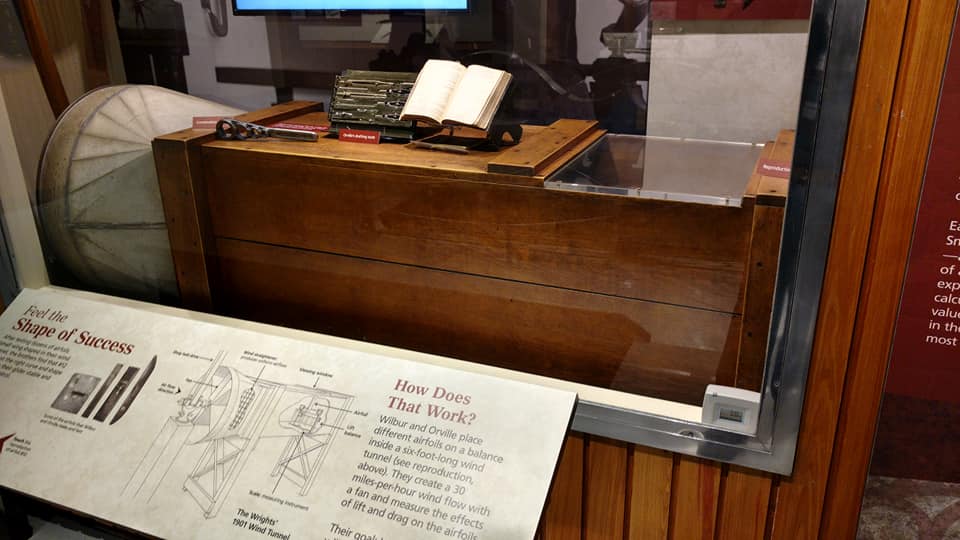Kill Devil Hills, North Carolina is positively dead in the winter. Tourists have departed, taking the warm weather and sunshine with them. What remains are local residents and cold Atlantic air racing across the beaches. Business owners look forward to spring and summer returning with visitors who enjoy the sea air, fishing, and sailing. The remoteness and wind patterns were ideal for a different pair of tourists though. They scoured weather patterns finding the right conditions for their scientific experiments. After a lengthy search, the Wright Brothers selected Kill Devil Hills. Since the area was unincorporated, the brothers relied on the nearby town of Kitty Hawk for transportation and commercial needs. History would soon make its mark on this remote stretch of North Carolina coastline.

Rather than delve into the brothers’ history and their aerial achievement, it’s important to understand the ingenuity they showed throughout their venture. Scientists and engineers before them were classically trained students with years of mechanical experience. Neither Wilbur or Orville graduated from high school; they dropped out to pursue business interests and support their family. They taught themselves in advanced mathematics and engineering concepts, a majority of which came from their work with bicycles. They relied heavily on the work of predecessors and applying their innovations. Orville and Wilbur were well known in Dayton, Ohio with their bicycle business and made a comfortable living. This wasn’t enough for either of them though. They were obsessed with powered flight since childhood after receiving a crude model helicopter (a bamboo shaft with a cork top, paper wings, and a twisted rubber band) inspiring an aeronautical career.
Research was needed to see what contemporary aeronautical engineers were accomplishing. The brothers followed men like Otto Lilienthal, Samuel Langley, Octave Chanute, and Sir George Cayley. Gliders was the preferred method in calculating heavier-than-air flight and the brothers debated ideas on control and resistance. Fixed wing aircraft would provide the necessary lift power, but the brothers puzzled over how to maintain control and account for airborne stability. While working in their bike shop one day, Wilbur was twisting an inner tube and they had a sudden realization; wings required warping and therefore a flexible frame design was needed. They studied the flights of birds, closely observing wing contours, banking different directions, and using airflow for lift. Testing this theory proved difficult as the brothers consistently tried to find the correct combination of control and lift, all while accounting for the addition of weight. The Wright brothers are prime example of trial and error and consistent testing when it comes to scientific research. Aeronautics was a novel scientific endeavor in the late 19th century as engineers tested new gliders, airships, and dirigibles. Humanity’s quest to fly presented infinite engineering possibilities, but created a slew of failed attempts, poor data results, and accidental deaths. The Wright brothers were no exception in this respect; they faced their own string of failures.

Wilbur and Orville refined their glider designs throughout most of the 1890s and by 1900 they were ready for field tests. U.S. Weather Bureau data and recommendations by other aviators pointed the brothers to Kitty Hawk and Kill Devil Hills with the soft sandy beaches and ample gale winds providing ideal environmental conditions. The brothers worked first on gliders because they would be critical in proving the brother’s theory of airflow lift and three dimensional axis. Between 1900 and 1902, the Wrights redesigned, rebuilt, and retested their glider in dozens of trials, but they never achieved the necessary lift. What was wrong with their glider?
Sometimes you need to go back to the beginning to see where things are going wrong. Wilbur and Orville thought what if the Lilienthal data they relied on so heavily was incorrect? The lift co-efficient, which relates the lift generated by a lifting body to the fluid density around the body, needed to be double checked. How did the Wrights test this concept? They built their own wind tunnel. The apparatus was attached to a bike and as air passed by the airfoil, the lift it generated, if unopposed, would cause the wheel to rotate. The flat plate was oriented so its drag would push the wheel in the opposite direction of the airfoil. The brothers used different sizes of airfoils made of various materials based on existing data. This experiment confirmed their suspicions; Lilienthal’s data and lift co-efficient were all erroneous. Not to be deterred from their work, the brothers now had their own testing method for achieving lift with their glider. In a conversation with a colleague George Spratt, Orville said:
“If we all worked on the assumption that what is accepted as true is really true, there would be little hope of advance.”

The wind tunnel tests were a pivotal moment in the pursuit for powered flight. Contemporaries described them as ‘the most crucial and fruitful aeronautical experiments ever conducted.’ What the brothers may have realized is that gliders and powered aircraft required different degrees of lift and incorporating a control system would maintain said lift. The structural design of the brothers’ glider changed as a result of their wind tunnel tests and they began to see major improvements in their test flights. They installed a rudder and recorded observations on lift, pitch, and yaw. From this, the brothers made a final critical breakthrough on their flight experiments: three-axis control. The three axes: 1) Wing-warping for roll 2) Forward elevator for pitch 3) Rear rudder for yaw.
Aviation historians claim that this development was far more significant than adding engine power to the glider. Simultaneously, how astounding is it that these two who never completed high school calculated an equation that became the basis for achieving flight? Their innovative mathematics did not end there. Before building an engine, they devised another equation that produced the necessary power to weight ratio and propeller efficiency. In 1903, the brothers were ready to test their new flyer, the Wright Flyer. They built a small-purpose engine in their bike shop, hand carved the propellers, and tested the rudders in their wind tunnel. Throughout these experiment years, the brothers also delivered lectures to the Western Society of Engineers detailing their process. Newspapers did not initially cover the brothers heavily, waiting until they produced something genuine.

Four flights changed the world on December 17, 1903. The brothers alternated turns flying the machine, with the last flight recorded as the longest and furthest launch. Years of research, experimentation, glider construction, and test flights boiled down to 59 seconds. From that moment on, the brothers refined their flyers and took the world by storm with their paradigm shifting accomplishments. Their persistence and ingenuity paid off immensely. The Wrights brothers spent their remaining years involved in patent battles with other manufacturers and other business disputes. While they were not as successful in their business pursuits, they demonstrated how a person could make strides in scientific experimentation through repeated processes, observation, and accurately recording data. They were an ingenious duo, without a doubt.
The original Wright Flyer now hangs in the National Air and Space Museum in Washington D.C. where a plaque perfectly summarizes the Wright brothers achievements and ingenuity.
“The world’s first power-driven heavier-than-air machine in which man made free, controlled, and sustained flight, Invented and built by Wilbur and Orville Wright, Flown by them at Kitty Hawk, North Carolina December 17, 1903, By original scientific research the Wright brothers discovered the principles of human flight, As inventors, builders, and flyers they further developed the aeroplane, taught man to fly, and opened the era of aviation”
Great article. The Wright Brothers museum at Kill Devil Hills is worth the trip.
LikeLiked by 1 person